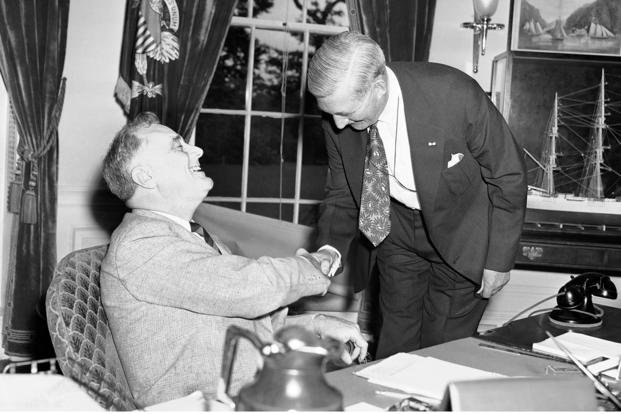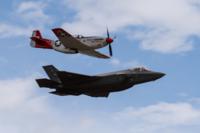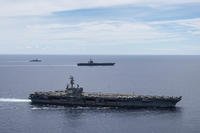In the coming months, Military.com will profile companies that have provided significant support to the U.S. military in times of national crisis. This is Part III of a three-part series profiling General Motors' contribution to America's warfighting capabilities during World War II.)
It didn't take William S. Knudsen long to make up his mind. President Franklin D. Roosevelt needed him, so there was only one answer the General Motors president could give.
In May 1940, the United States was still at peace, but war was raging in Europe. Knudsen, a Danish immigrant, gathered family members in his Detroit living room and announced he was leaving GM to head FDR's new National Defense Advisory Commission.
The family was dumbfounded, said automotive historian and author Michael W.R. Davis. Then one child broke the silence to ask her father why he was doing that.
"This country has been good to me, and I want to pay it back," Knudsen said.
"Big Bill" Knudsen, who had become famous for his expertise in mass production, would lead a mobilization of U.S. industry to build the nation's defense arsenal.
Read Part 1: How an Auto Giant Got Ready for War
Read Part 2: How GM's Divisions Tackled the War Effort
No company answered the call to arms as completely as his former employer. By the end of War War II, GM was the nation's largest defense contractor, delivering an estimated $12.3 billion in material to the war effort. (That equals about $147 billion today.)
Overnight, it seemed, GM took plants that had been producing Cadillacs, Pontiacs and Oldsmobiles and turned them into tank, munitions, aircraft and military transport factories.
"It has been called the greatest industrial transformation in history, with all of the General's 200-plus North American automotive plants shifting to production of airplanes, tanks, machine guns, amphibious transports and other military vehicles within a matter of months," wrote William Pelfrey in "Billy, Alfred, and General Motors: The Story of Two Unique Men, a Legendary Company, and a Remarkable Time in American History."
GM's war production ranged from Browning machine guns to aircraft propellers and TBF Avenger torpedo bombers. "It built more Grumman torpedo bombers and fighters than Grumman did itself," historian Davis said in an interview with Automotive News. "They did a lot of things like that."
Some products GM designed itself, under government supervision. Those included tanks, armored cars, aircraft engines and one of its most famous war products, the amphibious GMC and Chevrolet trucks known as DUKWs or "ducks." The DUKW was a truck wrapped in a boat hull. Davis called it "an incredible invention."
Each division of General Motors joined the war effort. Pontiac made anti-aircraft guns, Cadillac made tanks and Oldsmobile made shells and assembled cannons. Military vehicles roamed the expanse of GM's Milford Proving Ground outside Detroit where technicians tackled the problem of excessive noise in combat vehicles.
The war also paid dividends for future products. Following up on GM's work on aircraft engines, Cadillac engineers in 1949 introduced a landmark engine, a high-compression V-8 that could efficiently use the high-octane gasoline that became available after the war.
The man who started it all, Knudsen, rejoined the GM board of directors after the war, but he tried in vain to get his job back, according to Pelfrey. He wrote that Knudsen, whom Roosevelt had named an Army lieutenant general, privately asked GM Chairman of the Board Alfred Sloan whether he could come back to GM.
Sloan, an opponent of FDR's New Deal who had opposed Knudsen's departure in the first place, refused to take him back. He cited Knudsen's age: 65.
Sloan was 70.
But author Davis said Knudsen's role cannot be diminished.
"General Motors' greatest contribution to the war effort in World War II was not its tanks, its airplanes, its trucks, its DUKWs, its guns and so forth, but, rather, Big Bill Knudsen," Davis said.
For more on GM and its contributions to the U.S. military throughout history, visit the GM Military History page.
The Next Step: Get Veteran Jobs Tips
Looking for transition and veteran jobs tips? Military.com has you covered. Subscribe to Military.com to have military news, updates and job resources delivered directly to your inbox.











